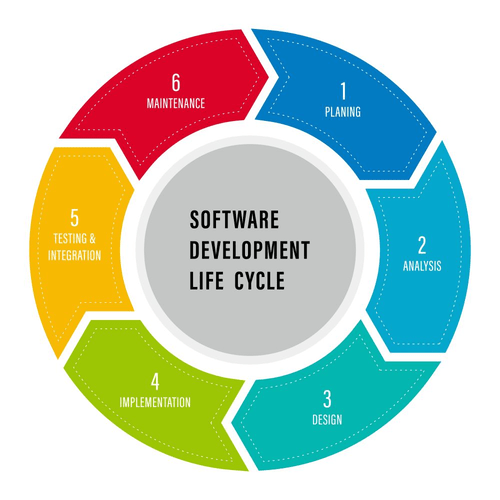Once that is determined, elements and applications collectively should meet prime quality standards—an essential for the success of service supply. In Software Engineering, Operational Testing makes sure that the system and component’s compliance in the application’s standard operating surroundings (SOE). In this dynamic dance of testing, communication serves because the rhythm that binds us.
Professional software program testers are perfect for this task as they characterize real users and specialize in testing. Identify take a look at eventualities from enterprise processes and create test https://www.globalcloudteam.com/ cases with clear steps. Confirm that each one CSS types render correctly and don’t impede consumer navigation within the software.

Acceptance testing allows a company to have interaction finish users in the testing process and gather their feedback to relay to developers. This feedback helps QA identify flaws that it might have missed through the growth stage checks, corresponding to unit and useful testing. Additionally, acceptance testing helps builders perceive business wants for every function within the examined software. Acceptance testing can also help make sure the software program or application meets compliance guidelines. It is carried out during the last stage of STLC (i.e., after user acceptance testing (UAT) phase). OAT is typically conducted after the functional UAT and entails a sequence of checks that cowl completely different elements of the system’s operation.
Widespread Errors To Keep Away From During Operational Tests
UAT also helps detect defects and mitigate dangers to ensure a successful software program launch. Even if the software has undergone a quantity of testing phases and seems absolutely functional, it may still fail to meet its requirements if it’s not well-received by its meant customers. This may result from unclear software requirements communicated to developers, project scope modifications during improvement, or untimely testing in real-world environments. Operational Acceptance Testing (OAT) is a software testing approach which evaluates the operational readiness of a software program application previous to the discharge or manufacturing.

According to an Information Technology and Intelligence Corporation survey, corporations can’t obtain zero downtime; one out of 10 firms wants higher than ninety nine.999% availability. Operational Acceptance Testing reduces downtime and meets the business objectives of faster system delivery at a decrease value. It is essential to perform comprehensive testing of your digital products in the actual world so they can meet the required situations and person expectations. Without running operational exams, a software program product or application lacks the required depth concerning different factors similar to efficiency, safety, and reliability. It ensures your software product or utility is free from defects or bugs. Regarding cellular apps, operational exams turn into essential in evaluating the app’s overall performance in the long run.
What Are The Steps Of Oat?
Operational Acceptance Testing primarily focuses on the operational readiness of the software program and to become a half of the production setting. Functional testing in operational acceptance testing is restricted to the tests required to verify the non-functional elements of the system. Operational Acceptance Testing is also identified as Operational Readiness Testing (ORT) or Operations Readiness and Assurance Testing (ORAT). Operational acceptance testing (OAT) is used to conduct operational readiness (pre-release) of a product, service, or system as a half operational acceptance testing of a excessive quality administration system. OAT is a standard type of non-functional software program testing, used primarily in software program growth and software program upkeep projects.
In addition to this, he has experience in TL, ata arehouse, Non-Functional Testing, Performance ngineering, System Integration Testing, IT Automation, and Functional, and Regression testing. E has in depth data of BFSI testing with greater than six years of expertise working with a multinational European financial institution. The key metrics involved in measuring the availability of the system are MTBF and MTTR.
- Hence, it is also known as operational readiness testing (ORT) or operations readiness and assurance testing (OR&A).
- Once the test is written based on the plan, finish users work together with the software program to gauge its usability.
- Acceptance testing permits a company to interact end users in the testing process and gather their feedback to relay to builders.
- Therefore, it should be a no brainer to ensure operational testing is also performed, in any other case you’ll be rolling out an application into an actual world community setting it has by no means been subjected to.
Therefore, it should be a no-brainer to make sure operational testing is also conducted, in any other case you’ll be rolling out an application into a real world network environment it has never been subjected to. Operational acceptance checks consider a quantity of procedures, together with efficiency, stress, quantity, help processes, safety, backup, and alert detection. The testing group is the first staff performing operational tests as they are a half of the entire course of. The execution and implementation of take a look at scripts and working with check information assist them to execute operational test cases in a significantly better and seamless means. You also can see completely different groups, similar to customer support and implementation, helping check groups validate different situations. Critical software program bugs or defects may find yourself in industrial failure of any service or product.
Extra Definitions Of Operational Acceptance Take A Look At
This resulted in the product’s downfall, and different software program companies quickly realized that we should always not launch a product until it was 100 percent prepared. Operational acceptance testing validates the product quality and ensure better user experience. To enhance OAT continuously, you want to gather and analyze the suggestions, classes discovered, and finest practices from the testing. You ought to establish the strengths and weaknesses of the testing process and the system. You must also suggest and implement any adjustments or improvements that may enhance the quality, effectivity, and effectiveness of OAT. You should also update and refine the OAT plan, strategies, and standards based mostly on the altering wants and expectations of the organization and the customers.

This is why organizations must observe a structured process to evaluate the readiness of software or websites before they are deployed in real-world environments. Most of the time testers not only check that the equipment meets the specification but in addition that it’s totally useful. There may also be legal or contractual requirements for acceptance of the system. Operational Acceptance Testing (OAT) is a kind of User Acceptance Testing (UAT) that focuses on verifying the readiness of the system for deployment and operation in the actual environment.
The main goal of the system is to verify if it fulfils all designated requirements for operation and maintenance. Your builders can write refined code that makes use of picture recognition and machine studying to identify a plant. It will most probably extract the unique options that permit it to slim in on the correct genus and species. However, your developers and testers usually are not botanists; they have probably used a library of plant photographs to develop the application. To consider the software’s accuracy, you need a botanist to check it in the subject.
To plan OAT successfully, you have to define the aims, scope, standards, and strategies of the testing. You additionally need to determine the roles and duties of the stakeholders, such because the testers, developers, operators, customers, and managers. You should document the OAT plan in a transparent and concise method and talk it to all the parties concerned. You must also align the OAT plan with the project schedule, price range, and sources.

Whenever you build a product for customers or end-users, you should run exams to make sure it meets quality and security requirements. With UAT, the purpose is to check whether your new product delivers value for its customers. We have compiled a radical information on UAT, including one of the best practices and key concerns as you perform UAT. This sort of testing ensures processes operate as expected and that employees can sufficiently use and preserve the system. Operational acceptance testing examines backups and catastrophe recovery, as well as maintainability, failover and safety.
Operational acceptance testing serves an important operate in verifying the operational readiness and suitability of a system for utilization. This represents a big stride within the pursuit of a software system that reveals enhanced high quality, elevated dependability, and heightened resilience. This optimization can lead to enhanced outcomes for software deployment endeavors. Develop the UAT plan, outlining the technique to make sure the applying aligns with its business requirements. This plan consists of entry and exit criteria, test scenarios and cases, and testing timelines. Ensure specific test assignments cover all parts of the software program, primarily based on actual user interactions.
This type of testing focuses on the operational readiness of the system to be supported, and/or to become part of the manufacturing setting. Hence, it’s also known as operational readiness testing (ORT) or operations readiness and assurance testing (OR&A). Functional testing within OAT is proscribed to those checks that are required to confirm the non-functional features of the system. Operational Acceptance Testing (OAT), also identified as Operational Readiness Testing, is a crucial phase within the software growth lifecycle.

Use everyday language in directions, contemplating that customers will not be builders or enterprise professionals. A QA team conducts acceptance checks to ensure the software or app matches enterprise necessities and end-user wants. A fail suggests that there’s a flaw present, and the software program mustn’t go into manufacturing. Organizations across the globe have realized the true worth offered by operational tests, which is why you will see more and more structured processes being outlined for it.
This part also retains a examine on the progress through inspections, formal evaluations, and walkthroughs. In the validation part, precise implementation of the verification phase is carried out. Practical exams on system elements, applications, and information are carried out on this part. The key deliverables of this phase embrace the OAT defects summary and OAT check completion report. OAT is necessary as a outcome of it helps to determine and resolve any points that may affect the system’s availability, stability, and usefulness in the manufacturing setting.
Trả lời